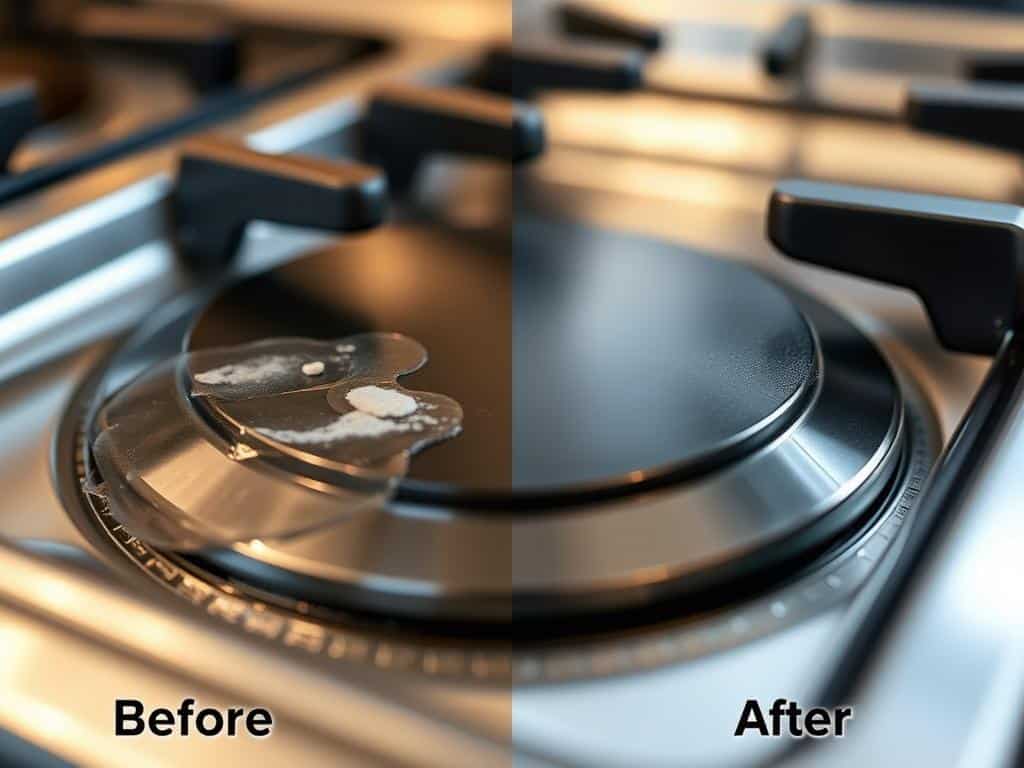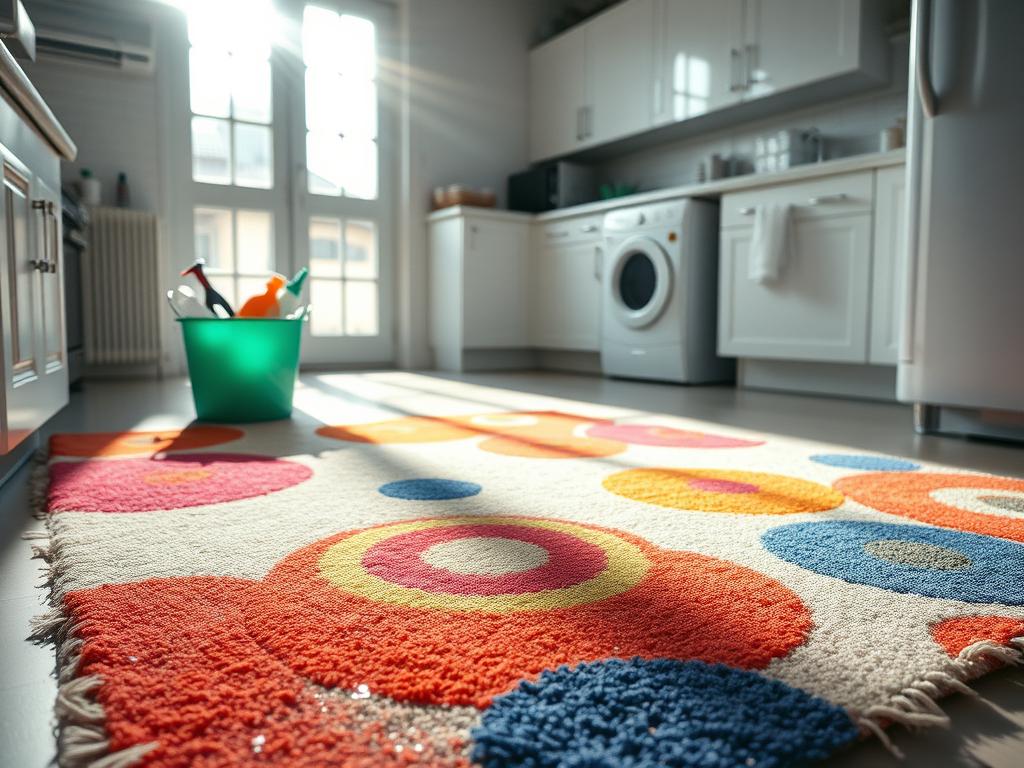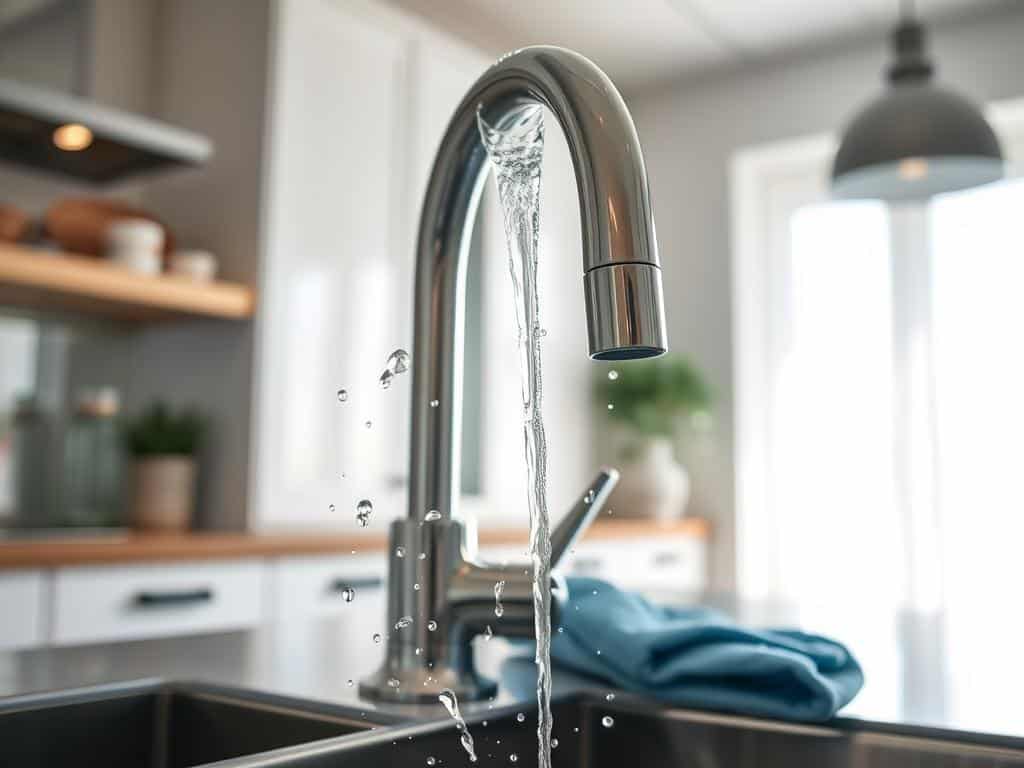
Stove burners are notorious for accumulating stubborn stains and splatters from everyday cooking, turning them into a challenging task to clean. Regular kitchen maintenance is vital for both functionality and hygiene. Fortunately, you can achieve effortless stove burner cleaning by using expert-recommended methods that forego the need for harsh scrubbing.
Whether you have a gas, electric, or glass stovetop, these easy cleaning techniques ensure that your stove burners remain in pristine condition with minimal effort. From soaking and using gentle cleaning solutions to employing no-scrub stove top methods, maintaining a clean stove is simpler than you think. By attending to your stove top after each use and relying on effective appliance care strategies, you can keep your burners gleaming without the extra elbow grease. Stay tuned as we delve deeper into each method to make your cleaning routine a breeze.
Materials You’ll Need for Effortless Stove Burner Cleaning
Cleaning stove burners can be a daunting task, but having the right materials can make the process much easier and more effective. Whether you have a gas or electric stove, using appropriate gas stove cleaning supplies, electric burner cleaning products, and other kitchen cleaning essentials can ensure your burners stay in top condition.
Essential Items for Gas Stove Burners
To maintain your gas stove burners, you will need specific gas stove cleaning supplies. A popular choice is the Range Gas Surface Burner Cleaning Kit A03675801 recommended by Sears for thorough burner head cleaning. Additionally, cleaning the burner grates and caps is essential; the Cerama Bryte Burner Grate Cleaning Kit is highly effective for this task. It’s advised to remove the grates and soak them in warm, soapy water for at least 15 minutes to loosen any stuck-on food or grease.
Furthermore, the Cerama Bryte Cooktop Cleaner is a fantastic crème for cleaning the gas cooktop surface, ensuring it remains spotless. For those with stainless steel cooktops, the Cerama Bryte Stainless Steel Wipes are perfect for polishing and maintaining a shiny appearance. Regular cleaning every two months can keep your gas stove in excellent working condition and reduce the need for deep cleaning.
Required Supplies for Electric Stove Burners
For electric stoves, including both contemporary stovetops and those with raised coils, specific electric burner cleaning products are needed. Essential kitchen cleaning supplies include baking soda, sponges, gentle dish soap, and microfiber cloths. For modern electric stoves, creating a paste with baking soda and water can effectively remove grime and spills without scratching the surface. For coil burners, a mixture of dish soap and water used with a sponge will help keep them clean without causing damage.
It’s also crucial to give your electric stove a quick wipe-down after each use. This maintenance step can prevent grease and grime buildup, resulting in easier cleaning sessions. Regularly scheduled cleanings can simplify your cleaning routine and extend the lifespan of your stove.
Using the right burner maintenance tools and techniques is paramount for keeping your stove burners in pristine condition. Whether you have a gas or electric stove, ensuring you have the correct cleaning products can save time and effort, making your kitchen cleaning routine more efficient and effective.
- Gas Stove Cleaning Supplies
- Electric Burner Cleaning Products
- Kitchen Cleaning Essentials
- Burner Maintenance Tools
Expert-Approved Methods for Cleaning Stove Burners
To ensure effective stove burner maintenance, it’s essential to follow expert cleaning tips that cater to different stove types. Regular cleaning techniques include using household items like baking soda, which can be transformed into a powerful paste for tackling high-debris areas.
For glass-top electric stoves which are increasingly popular due to their easy cleaning surface and induction cooking technology, a method involving baking soda and vinegar is highly recommended. Simply sprinkle baking soda over the surface, then spray vinegar on top, allowing the mixture to fizz and lift stubborn stains.
Specific home care advice for gas stoves includes removing the gas stove grates and burner caps for thorough cleaning. These components can be soaked in hot, soapy water for at least 20 minutes and, for tougher grime, a paste made of three parts baking soda to one part water can enhance cleaning efficiency.
Gas stove tops, known for their responsive heating and real flame cooking, require regular upkeep. Cleaning techniques for burner caps involve using a damp cloth, ensuring no blockages in the burner ports to maintain proper gas flow. It’s crucial to clean cast iron stove grates by soaking them in warm, soapy water, wiping them clean afterward, and thoroughly drying before replacement.
Electric coil stove tops, which offer even heating with adjustable knobs, require the removal of the burners for cleaning. Warm, soapy water works well for the coils, while a mixture of vinegar and baking soda is ideal for cleaning the drip pans beneath. Regular cleaning prevents buildup and maintains efficiency.
Here is a detailed comparison of cleaning methods for gas and electric stove burners:
| Stove Type | Cleaning Method | Frequency |
|---|---|---|
| Glass-Top Electric Stove | Wipe down with baking soda and vinegar | After each use |
| Gas Stove | Soak grates and burner caps in hot, soapy water; clean with baking soda paste for tough stains | Quick clean after each use; deeper clean weekly |
| Electric Coil Stove | Remove burners; clean with warm, soapy water; clean drip pans with vinegar and baking soda | After each use |
By following these appliance upkeep guidelines, you can maintain your stove burners efficiently. Regular and proper cleaning not only ensures a hygienic cooking environment but also extends the life of your appliance.
Using Ammonia to Clean Stove Burner Parts
Among the most effective cleaning hacks for stove burners, the ammonia cleaning method stands out for its remarkable ease and efficiency. This no-scrub cleaning technique eliminates the need for scrubbing, making it a popular choice for burner part maintenance.
This method leverages the power of ammonia to dissolve tough, baked-on grime with minimal effort. Here, we’ll guide you through the step-by-step ammonia method, ensuring you can implement this in your cleaning routine seamlessly. It’s essential to take certain precautions due to the hazardous nature of ammonia, but the results are well worth the effort.
Step-by-Step Ammonia Method
- Gathering Materials: Protective gear (gloves, eyewear, and a mask), garbage bags, ammonia, and a non-scratch scouring pad are vital for this method.
- Prepping the Grates: Place each stove grate into a separate garbage bag.
- Adding Ammonia: Pour 2-3 cups of ammonia into each bag. For larger grates, consider using a 5-gallon bag or a trash bag. Seal the bags tightly to prevent leaks.
- Waiting Period: Let the stove grates sit overnight, typically for 8 to 12 hours. Ensure proper ventilation during this process.
- Post-Soak Cleaning: In the morning, scrub the stove grates gently with a non-scratch scouring pad and rinse thoroughly to remove any ammonia residue and smell.
- Disposal: Dispose of the ammonia-filled bags responsibly after the cleaning process.
For any stubborn spots, a paste made of baking soda and hydrogen peroxide can be an excellent follow-up. This ensures a thorough clean, leaving your stove parts looking as good as new.
To maintain a consistently clean kitchen, regular cleaning and kitchen appliance tips are crucial. For additional tips and professional assistance, you might find the advice in this article insightful.
The ammonia cleaning method is celebrated for its simplicity and effectiveness, making it an essential hack for homeowners aiming to keep their kitchen appliances pristine without extensive effort. Remember to always prioritize safety by wearing appropriate protective gear.
Pro Tips for Cleaning Stove Burners Without Scrubbing
Achieving sparkling stove burners without rigorous scrubbing is possible with the right strategies. This section offers professional cleaning advice that ensures effective and easy stove burner care. Regular maintenance can save 50% of time spent on deep cleaning tasks, making these appliance maintenance tips indispensable.

One efficient method is to maintain a routine of regular wipe-downs using either all-purpose cleaners or a simple homemade mixture of equal parts vinegar and water. This DIY solution, readily available in most kitchens, prevents the accumulation of grime and makes subsequent cleaning easier. For tougher, baked-on messes, creating a paste of vinegar, baking soda, and dish soap can facilitate their removal with minimal effort. Simply apply the paste, let it sit for 15 to 30 minutes, and then wipe it off.
To illustrate, if dealing with electric stovetops, it’s recommended to use The Pink Stuff cleaner, which costs $5.97 and is especially effective in conjunction with a soft cloth. Alternatively, a DIY solution can be prepared by combining equal parts vinegar and water in a spray bottle. This mix should sit on tough stains for 15 to 30 minutes before wiping it clean.
Cast iron burners require a more specific approach. Instead of soaking—which 80% of users find leads to rust formation—clean them using a coarse salt paste. Afterward, season the cast iron to maintain its non-stick properties and prevent rust.
- For gas stoves, use ammonia for burner grates and caps. Soak them overnight to dissolve stubborn grime.
- Avoid using excessive water on gas stovetops to prevent continuous sparking noise issues related to wet spark electrodes. If this occurs, disconnect the power and allow ignitors to dry completely.
- Safely scrape off residues using plastic razor blades, which cost $1.33 for a 10-pack. These will not damage the surface, an essential point of these kitchen cleaning strategies.
- Regular maintenance—performed by 60% of users—can greatly reduce the need for deep cleaning and enhance consistent, even cooking, thus benefiting 90% of users.
For further detailed guidance, you can visit kitchen cleaning strategies specific to stove burner care and appliance maintenance tips on various stovetop surfaces.
| Cleaning Method | Recommendation |
|---|---|
| Gas Stove Grates Soaking | Soak in ammonia overnight |
| Eco-Scouring Paste | 4 tablespoons baking soda, sprinkle of salt, 2 tablespoons water |
| DIY Vinegar Solution | Equal parts vinegar and water |
| Electric Burners Cleaner | The Pink Stuff – $5.97 |
| Soft Scrapers | Plastic razor blades – $1.33 for 10-pack |
| Regular Maintenance | Prevents 50% of deep cleaning tasks |
By incorporating these professional cleaning advice and appliance maintenance tips into your routine, you can ensure that your stove burners remain clean and functional without the need for strenuous scrubbing.
Conclusion
In summary, maintaining clean stove burners is a crucial part of your cleaning routine summary. By following the effective methods and utilizing the proper materials, you can tackle different types of burners with ease. Regular upkeep can significantly reduce the need for deep cleaning and keep your kitchen appliances in top-notch condition. Whether you have gas, electric coil, or glass top burners, adapting your cleaning techniques to suit each type ensures optimal results.
Routine maintenance not only simplifies the cleaning process but also improves burner efficiency and safety by preventing the accumulation of grease and food residues. Cleaning gas burners involves disassembling and soaking parts in soapy water, while glass tops require gentle handling to avoid scratches. For tough stains, a paste made of white vinegar, baking soda, and dish soap is highly effective.
By incorporating these kitchen upkeep practices into your stove maintenance recap, you’ll find that effective burner cleaning becomes a straightforward and manageable task. Remember, professional help is available for complex or old stoves that may require more attention. Embrace this simplified cleaning approach to enjoy a cleaner, safer, and more efficient kitchen environment.



